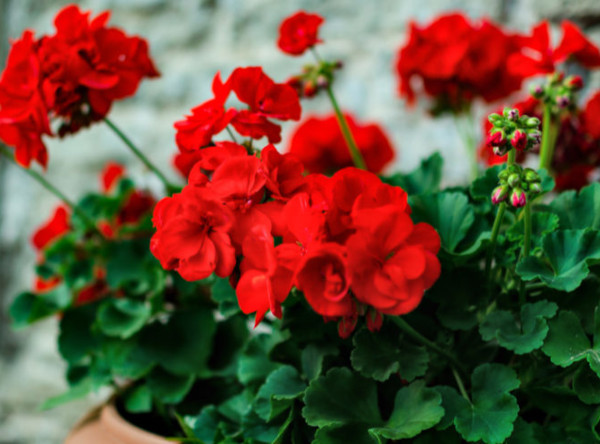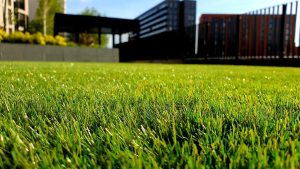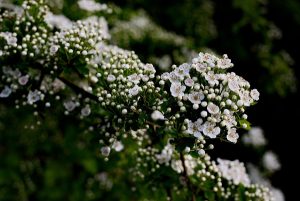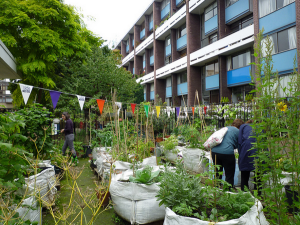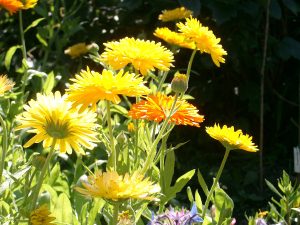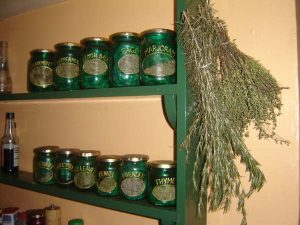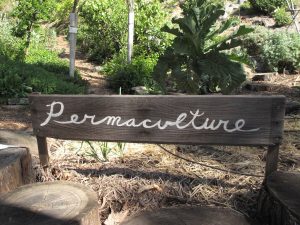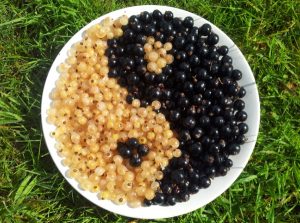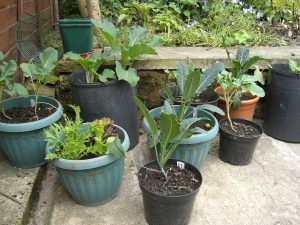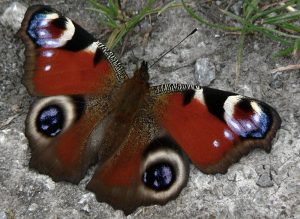Many perennials, shrubs and trees – particularly newly planted – are going to struggle in the kind of conditions we’re faced with as I write – record high temperatures after months of low rainfall. What can we do to help them?
Plant selection
Let’s take a step back. There are going to be plants which are going to struggle in drought conditions whatever you do. Avoid planting them. If you already have semi-mature or mature plants which need lots of TLC to get through the summer, steel yourself to wave them goodbye. Climate change isn’t going away. Sooner rather than later they’re going to give up the ghost, so save yourself the effort and expense of trying to save them.
We’ve been planting lots of trees for shade, but avoiding ornamental trees and shrubs which can’t cope and planting species which can. Many are also – surprise surprise! – good for pollinators, particularly as they flower at odd times of the year. They include Paulownias – we sell tomentosa, the Foxglove tree, and we also have the even more exotic kawakamii here. I’ve also planted Evodia hupehensis and Hovenia dulcis, which are doing well too. We have Arbutus unedo too, the Strawberry tree, an intriguing small deciduous tree which thrives on our heavy clay. Of course, there are tonnes of Mediterranean plants to consider. I’ve recently bought Echium fastuosum* and Geranium maderense, for example, and we have lots of herbs.
It’s worth mentioning that some of these plants aren’t fully frost hardy. A greenhouse or conservatory is helpful to help them overwinter.

The other species which stand up are our native flora. Many are incredibly resilient. Most native hedge plants – like Hawthorn and Blackthorn – are tough as old boots. Many or our native species have a natural range which includes the Mediterranean, after all. The photo above is Broom, which I found flourishng on the southern Greek coast. British populations won’t be so heat tolerant, of course, but it’s a good hint they should do ok in drought.

Viper’s bugloss, Mallow and Teasel
Species rich grassland is amazingly resilient too; another reason for having a wildflower meadow. The grasses and wildflowers on our green roof, which is a kind of uber stressed meadow, have little help. They get massivlely stressed at times like this but persist very happily. There are lots of tough attractive native wildflowers there which work well in a garden setting – Kidney vetch, Birdsfoot trefoil, Stonecrops, Rockrose, Wild thyme, Musk mallow… the list goes on!
Plan your planting
Apart from plant selection, you can pre-empt many drought related issues for young plants by ensuring they establish quickly and healthily. There are some simple rules to follow when buying and planting:
- Buy bare root rather than pot grown where available. Like most nurseries, we sell all our fruit trees and hedge plants / woodland trees as bare root. They generally establish much better..
- Alway always buy small rather than big (see below).
- Plant bare root plants as early in the season (November – end March) as you can.
- If pot grown, avoid planting in summer unless you commit to regular watering.
- Use mycorrhizal fungi and compost when planting, and mulch if possible.

Well planted Hazel hedge whips in their first summer on site, bought as 2 year old 60-90cm bare root plants. Don’t water!
Maintenance
Maintenance is pretty straightforward! There are the key messages:
- Keep base of plants clear of competing grass and weeds.
- Where possible use a mulch (e.g. bark) to retain moisture and suppress weeds. I never spread my mulch far enough; the books say typically 1m.
- Don’t prune aggressively (i.e. don’t encourage growth).
- Don’t use a high nitrogen fertiliser during drought, which will promote lots of top growth.
- DO use a general fertiliser outside dry periods to develop healthy root systems and resistance to drought.
Watering new plants
I don’t think there’s a hard and fast rule about watering plants planted in the earth – as opposed to in pots.
The only instances I’ve come across of mass failures – when a whole hedge conks out, for example – have been the result of poor stock, poor planting and only occasional watering. Specifically, not when plants aren’t watered at all. These are typically 60-90cm 2 year old hedge whips.

Field maple with powdery mildew.
I only tend to water native whips and maiden fruit trees planted bare root if they’re showing signs of real stress. This could be bad powdery mildew, for example, leaf drop or drooping new growth. The problem with watering is two-fold. Once you’ve started you can’t stop, and you have to water properly. If you don’t, you just encourage root systems to stay shallow and get lazy, leaving the plant vulnerable to failure when it has to fend for itself. Secondly, there’s the practical side of things. You can’t realistically water a 10 Hectare woodland scheme, or a kilometre of hedge. If a semi-mature or mature plant is struggling I give up on it; it will be the wrong plant in the wrong place.
If you do have to water and you can afford it, give a suffering plant a dose of liquid tomato feed too – i.e. a low nitrogen formula. Water slowly to avoid runoff, water the soil rather than the plant, and in the evening or morning. Remember though the unwatered plants will tend to develop as more resilient.
Larger newly planted trees and shrubs need much more lavish attention and should be watered regularly and deeply. They are much, much more vulnerable than small whips. A drip feed irrigation system is ideal. Big specimens are routinely planted in urban settings – e.g. street trees – which I get, but should be avoided whenever possible. Even if they don’t fail, the initially smaller plants will quickly overtake them.
If you have established ornamental herbaceous plants which pollinators like, for example lavender, salvias, wallflowers or catmint, even if they look ok give them a good drink. If short of water, plants produce fewer flowers and less nectar.
Watering techniques
I use watering cans rather than a hose, to save water. If you have two 10 litre cans you can fill up one at the tap while pouring the other. The RHS suggest using 10% of the volume of any pot you’re watering, which sounds about right, but on the low side in hot weather. If I’m watering an established climbing rose or large shrub in a bed I’ll use at least a 10 litre can. Different plants in different soils and situations will need different quantities so there’s no firm rule, but it’s really important not to mess about – don’t give them too little.
It’s best to water in the morning or evening – I prefer the morning, so there’s not too much water about to encourage slugs and snails overnight. Watering in hot sun means evaporation, and you shouldn’t be out in it anyway! If you’re watering a plant from above, avoid its foliage and water directly into the soil. If mulched, move the mulch aside, and replace when you’ve finished. Remember to water a reasonable area the plant, not just close to the stem.
Pots
Always use a saucer with a pot. If it’s deep enough you can water by filling it up, which reduces the chance of getting Sciarid flies and encourage the root system to grow downwards. Even if not, it will collect any water which runs through the pot, which could be significant if the growing medium in the pot is easy draining. The plant can then absorb it over a couple of hours. Any left should be thrown away.
Water regularly and well, increasing frequency in hot weather. I water our pots weekly, but (with the exception of my succulents) at least twice that in hot weather, accoring to need. Watch out for tell-tale drooping, mildew or leaf curling.
Small pots will need more regular watering as they’re more susceptible to drying out; the surface of the pot is relatively large compared to the growing medium inside it. I tend to use unglazed terracota pots rather than plastic because I like the look of them, hink they provide some insulation against extreme temperatures. They also absorb water from the saucer, which must be helpful. If we hit a really bad heatwave, whatever your pots are made of, move them temporarily off exposed patios and terraces if you can and to a shady spot.
You can even use unglazed pots as a self-regulating slow watering system. Bury them, fill with water and cover with their saucer. The water will gradually seep out into the surrounding soil until it’s wet enough, at which point it stops.

Happy Pelargoniums!
Lawns
You just can’t put a sprinkler on your lawn, I’m afraid. It’s a hugely anti-social waste of water. Like a meadow, it will go brown but it won’t die. Leave the grass longer than you have been doing, which will improve its resilience. It will be better for wildlife too!
It’s worth mentioning that grass underfoot is much cooler than hard surfaces like stone, concrete or decking, of course. Just ask your pet! Impermeable surfaces are bad for drainage too, and climate change will bring with it increasingly violent rainstorms. If you have a lot of hard landscaping in your garden have a think about getting rid of some.
Plastic “grass” is terrible in extreme heat (it’s terrible period – Ed). It gets incredibly hot and has to be regularly hosed down to keep it anything like cool. You certainly can’t walk on it in bare feet. If you already have a plastic “lawn”, do please consider taking it up – it’s bad for wildlife and drainage. If you’re thinking of getting one please don’t.
Don’t give up
My last tip is – don’t give up. Even if a plant looks dead it probably isn’t. Perennials die but reseed themselves. Lawns turn brown. New transplants go into shock. Stressed plants drop their leaves. You’ll see green under the cambium of a distressed new plant if you scratch it, which will be the precursor to a Lazarus like recovery when conditions improve. Natur is amazingly resilient.
Footnote
I’m sure this kind of advice is going to change as climate change gets worse, and that our gardens and landscapes will adapt in ways that I can’t imagine. Nature is amazingly resilient though, and we can only just keep buggering on. Gardening is good for our mental and physical health, and our gardens and smallholdings will be even more important in the twin wars against climate change and biodiversity loss too.
*I’m a hug fan of our native Echium, Viper’s Bugloss, which we have loads of. Top bee plant.

